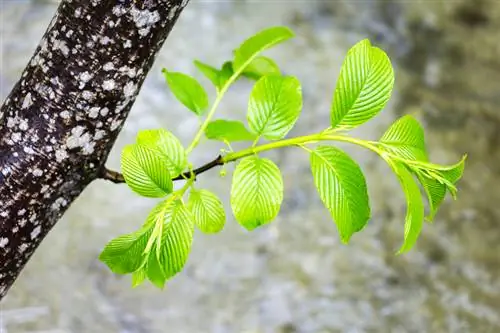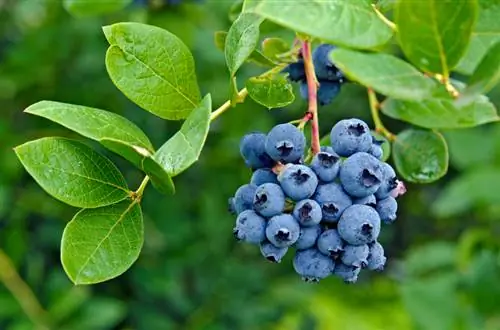- Author admin [email protected].
- Public 2023-12-16 16:46.
- Last modified 2025-01-23 11:20.
Hornbeams are very robust plants that require few nutrients. Additional fertilizer applications are only necessary in the first few years after planting. Later, hornbeams generally no longer need to be fertilized.

How should you fertilize a hornbeam?
Hornbeams should be fertilized in spring and May for the first few years after planting. Suitable fertilizers are compost, horn shavings, slow-release fertilizer or bark mulch. During later growth, it is sufficient to leave the fallen leaves lying to ensure natural fertilization.
Hornbeams develop long roots
In contrast to beech trees, hornbeams have deep roots. They develop a heart root that supplies the tree with nutrients and moisture from deep layers of the earth.
Fertilizing is therefore only necessary as long as the newly planted tree does not yet have long roots.
Provide nutrients when planting
If you plant a hornbeam, you should lay a good foundation of nutrients beforehand. Dig the planting hole and amend the soil with mature compost or horn shavings. Then you only need to give a little fertilizer in the following years.
Suitable fertilizers for hornbeams are:
- Compost
- Horn shavings
- Long-term fertilizer
- Bark mulch
When is the right time to fertilize?
You should only fertilize hornbeams in spring and again in May. Then the trees sprout again and need nutrients.
You should stop fertilizing later in the year. If the hornbeam then develops new shoots due to the nutrients, they can no longer mature.
In cold winters they freeze and die.
Fertilize hornbeams on sandy soils more often
If you have sandy soil in your garden, it may make sense to fertilize the hornbeam more often. Long-term fertilizers that are given in spring are well suited.
The best fertilization for hornbeams: leave the leaves behind
The leaves of the hornbeam hang on the tree for a very long time. The last ones only fall off when new growth begins in spring.
Just leave the leaves under the tree. This allows you to fertilize the hornbeam in a completely natural way. The leaves decompose and release nutrients. They also loosen the soil, prevent soil moisture from evaporating and keep weeds away.
However, the foliage must be he althy. If there is a fungal or pest infestation, you must carefully sweep up all leaves and dispose of them in the trash. This will prevent the infestation from spreading further.
Tip
Many gardeners believe that fertilizer is necessary after radically pruning the hornbeam. Instead of fertilizer, however, the hornbeam needs water. Therefore, water the tree thoroughly after cutting.






